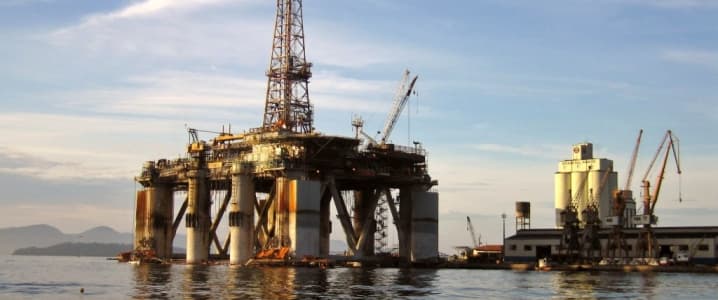Economy
Grim global economic outlook threatens 2019 budget

…as oil price fails to gain from quota agreement
By UCHE CHRIS
Hope that the 2019 budget may be revived seems to be vanishing as the OPEC meeting which was expected to spike oil price has sadly so failed to lift the market price despite the initial rally. The 2019 budget seemed to be dead on arrival as most of the benchmarks went out of the window even before the budget was passed, and further compounding the economic woes of the country.
Bench mark for the budget revenue is $60 per barrel and 2.3 million barrels per day, mbpd. But oil price has fluctuated between $58 and $65 since December 2018and output was placed under a new production quota of 1.8 mbpd, which is hardly up to the level revenue projections. Their combined effect produced considerable concern over the performance of the budget and the future of the economy.
The 2019 budget has a revenue profile of N8.4trillion with a deficit of N2 trillion. It is believed that the implementation of the new minimum wage approved shortly before the general elections in March, government recurrent expenditure may rise by as much as 62 percent further putting capital budget in jeopardy and sinking Nigerians deeper into poverty.
Expectation had been high that last week’s meeting of the Organisation of Petroleum Exporting Countries, OPEC, would provide a window of hope for the 2019 budget as oil price which had spike with news of agreement of stable quota and production output, plunged shortly after the meeting. The 176th Meeting of the Conference OPEC was held in Vienna, Austria, on Monday, July 1, 2019.
Before the meeting there had been considerable anxiety and speculations about a possible production and quota war among OPEC and between it and Non OPEC producers in view of the global economic challenges confronting most countries arising especially from the trade war between U.S. and China, slower growth in China and India – the main importers of oil – and subdued growth in the European Union.
However, Saudi Arabia’s Crown Prince Saud had a historic meeting with President Putin of Russia, two of the production leader of both blocs, to agree on the production and price guidelines before the OPEC conference. The outcome of the meeting showed that the two leaders had decided that the current production quota should be maintained to keep price up till December, which was cheering news to most producers. The two countries produce at least 10 million barrels per day each.
Following news of consensus between the two leaders that weekend before the OPEC conference, oil price surged from the previous price of $62 per barrel for Brent which is the equivalent of Nigeria’s Bonny Light before the meeting to over $66 on Monday giving renewed hope of revenue succour for the budget. But this early price rally was not maintained as the price slipped back to about $64 after the minister meeting and through the week.
This reversal of fortunes in the oil market comes in the heel of a new global economic forecast which showed a grim outlook and slower growth across the world but especially major oil consumers such as China, India and the European Union. The implication is that although OPEC and Non OPEC oil producers have decided to maintain stable supply, demand may still fall short of the output which may still depress price.
Experts say that Nigeria will be particularly hard put given the current challenges facing the country characterised by high debt service ratio, which is at about 62 percent of budget, huge fuel subsidy bill, put at N1.2 trillion per annum, which Emir Mohammed Sanusi II, recently said is pushing the nation into bankruptcy, and massive infrastructure deficit with power alone requiring about $36 billion (N100 trillion) to fix.
By seeking help from the Non OPEC producers, the cartel is weakened as it is desperately trying to keep a floor under oil prices. Since the start of 2017, OPEC+ (as it’s called when joined by oil-rich Non-OPEC Russia) has squeezed production to address a global oil glut. Oil fell last week partly because of fears that a global economic slowdown will hurt oil demand. OPEC+ hopes to slash inventories to a level not seen since the glory days of 2008, when oil was solidly priced in three figures.
The applause for President Donald Trump’s China trade truce was still echoing when his administration announced it might slap tariffs on more European goods. EU may also reciprocate, thus expanding the theatre of trade war and spreading the global gloom. Bank of England Governor Mark Carney warned of dangers from rising protectionism around the globe, citing a “widespread slowdown” that may require a major policy response.
On the other trade-war front, China, the economy is still struggling. That’s partly because of trade but also because the government is trying to tame the debt market.
The Conference took note of oil market developments since it last met in Vienna on 06/07 December 2018, and reviewed the oil market outlook for the remainder of 2019 and into 2020. It was noted that economic bearishness is now increasingly prevalent, with major challenges and mounting uncertainties related to ongoing trade negotiations, monetary policy developments, as well as geopolitical issues.
It was also observed that oil demand growth for 2019 has been revised down since the last meeting of the Conference to now stand at 1.14 million barrels a day (mb/d), and non-OPEC supply in 2019 is expected to grow at a robust pace of 2.14 mb/d, year-on-year.
In view of the current fundamentals and the consensus view on the outlook for the remainder of 2019, the Conference decided to extend the voluntary production adjustments agreed at the 175th Meeting of the OPEC Conference for an additional period of nine months from 01 July 2019 to 31 March 2020.
With this decision, Member Countries confirmed their continued focus on fundamentals and commitment to a stable and balanced oil market, in the interests of producers, consumers, and the health of the global economy. It also acknowledged the crucial role played by participating non-OPEC countries in the ‘Declaration of Cooperation’. In this regard, it stressed the significance of the 6th OPEC and non-OPEC Ministerial Meeting that will take place on 02 July 2019.
Its next Ordinary Meeting will convene in Vienna, Austria, on 05 December 2019.
Oil had its worst reaction to an OPEC meeting in more than four years, with prices sliding just after the cartel agreed to prolong production curbs as fears about the global economy mount.
Futures closed down 4.8% in New York, the steepest decline since May 31 and the biggest drop after an OPEC gathering since November 2014. That added to worries following weak manufacturing reports from the U.S., China and Europe. The anxieties blotted out optimism despite Tuesday’s agreement by major oil exporters to extend production cuts for nine months. Divisions remained over Saudi Arabia’s push to target even deeper reductions, with Russia expressing doubts at the end of a summit in Vienna.
“There are concerns that demand might slow to where it overpowers supply.” The “gloomy” data, especially from China, “is very much part and parcel of what we’re seeing,” analysts said
The drop in crude prices on Tuesday was an “anomaly,” OPEC Secretary-General Mohammad Barkindo told reporters in Vienna.
Saudi Arabia said it would keep its output below 10 million barrels a day, even lower than required under the so-called OPEC+ deal. Saudi Energy Minister Khalid Al-Falih said he was “enthusiastic“ of the outlook for oil demand.
Yet Russia, the other de facto leader of the group, questioned a Saudi proposal to use the average of 2010 to 2014 global oil inventories to set future production targets. That move, a change to current policy, would require deeper cuts but achieve the higher prices the Saudis need to balance their budget.
The OPEC pact leaves the door open for U.S. shale producers to grab more market share, as the group will have to cut deeper to achieve inventory targets, according to Goldman Sachs Group Inc. The decision creates a clearer downside risk to the bank’s forecast for Brent to average $60 a barrel next year, even though it could result in some shorter-term price spikes.








